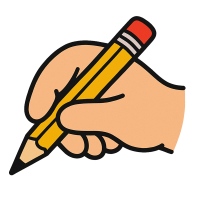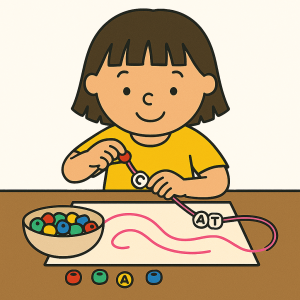Enhancing Fine Motor Skills in KS1
Understanding Fine Motor Skills and Their Importance
Fine motor skills refer to the coordination of small muscles in movements, often involving synchronisation of hands and fingers with the eyes. These skills are crucial for performing everyday tasks such as writing, buttoning clothes, and cutting with scissors. In young children, the development of fine motor skills is essential as it lays the foundation for more complex motor functions and cognitive abilities later in life.
There is a significant link between fine motor skills and writing capabilities. Children who have well-developed fine motor skills tend to have better handwriting, as they can control their hand movements more precisely. This ability not only aids in clearer and more efficient writing but also enhances their overall academic performance, as writing is a fundamental aspect of education.

Developing fine motor skills in the early years is therefore vital. These skills support children in executing everyday tasks independently and contribute to their self-esteem and confidence. Improving fine motor skills can lead to better literacy results and boost children's confidence in writing.
3 Activities for your KS1 Classes
Incorporating fun and engaging activities into the classroom can significantly improve fine motor skills in children.
One effective activity is using the Mighty Writer mat, where children manipulate colourful image tiles to form sentences. This task not only makes learning interactive but also enhances hand-eye coordination and fine motor control.
Another beneficial activity is threading beads onto a string. This simple yet effective exercise requires children to use their fingers precisely, improving their dexterity and control. Teachers can integrate this activity into literacy lessons by using lettered beads and asking children to spell by threading them onto string.

A third activity involves using playdough to form letters and words. This tactile experience supports children in understanding the shapes of letters while strengthening their finger muscles. The process of moulding playdough into specific shapes or letters helps refine their motor skills and can be connected to learning outcomes.
Integrating Literacy and Motor Skills Seamlessly
Integrating fine motor skill development alongside literacy can be achieved by using resources that engage children on multiple levels. The Mighty Writer tool provides an excellent platform for seamlessly blending these two areas. By encouraging children to manipulate sentence clouds and image tiles, teachers can promote both motor skill development and literacy learning simultaneously.
Boosting Confidence and Literacy Results
Improved motor skills can have a profound impact on children's confidence and literacy results. When children feel capable of manipulating tools and objects effectively, their self-assurance in writing tasks increases. This boost in confidence can lead to greater participation in literacy activities and a willingness to take on more challenging tasks.
Mighty Writer plays a pivotal role in supporting teachers to foster a positive learning environment where children's fine motor skills can flourish. With resources designed to engage and inspire, teachers can help pupils achieve better literacy outcomes. As noted by Mighty Writer, improving fine motor skills can lead to better literacy results and boost children's confidence in writing, creating a transformative learning experience.
Would you like to learn more about the Mighty Writer resource? Download our handy guide today! This free guide covers what Mighty Writer does, how sentence are composed using the resource, and how to use Mighty Writer day-to-day. Click below to download.

